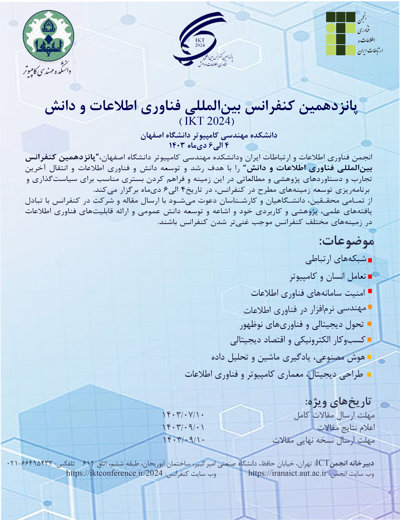0% Complete
Authors :
Keywords :
Abstract :
List of archived papers
فاطمه دوامی - حمید جلیلوند - فاطمه نجفی
Farzaneh Kazemzadeh - Ali Asghar Safaei - Mitra Mirzarezaee
Mohammad-Sajad Kasaei - Mohammadreza Sharbaf - Afsaneh Fatemi - Bahman Zamani
فاطمه الثلایا - دکتر سید علیرضا هاشمی گلپایگانی فاطمه الثلایا - سید علیرضا هاشمی گلپایگانی -
Engineer Reza Khalilian - Dr. Abdalhossein Rezai - Dr. Mohammadreza Talakesh
Shakiba Rajabi - Komeil Moghaddasi
Alireza Akhavan safaei - Pegah Saboori - Reza Ramezani - Mohammadali Nematbakhsh
Hosein Bayati - Fattaneh Taghiyareh - Sahand Hashemi
حنانه رجبیون - محمد قاسم زاده - وحید رنجبر بافقی
Farnaz Salmanian - Dr Hamid Jazayeri - Dr Javad Kazemitabar




